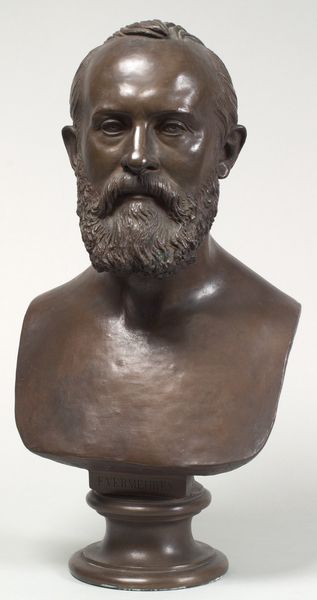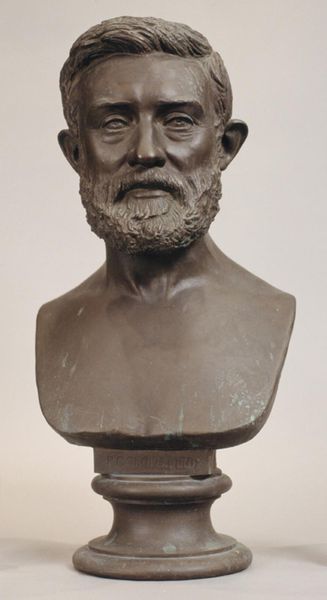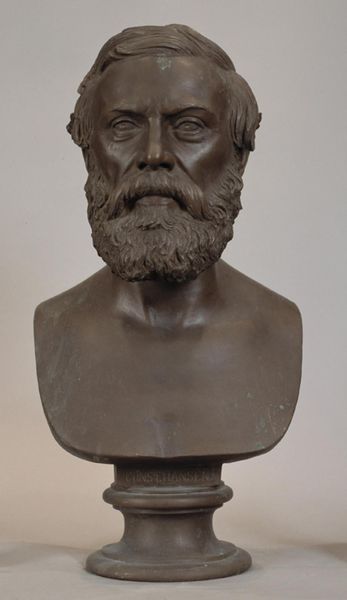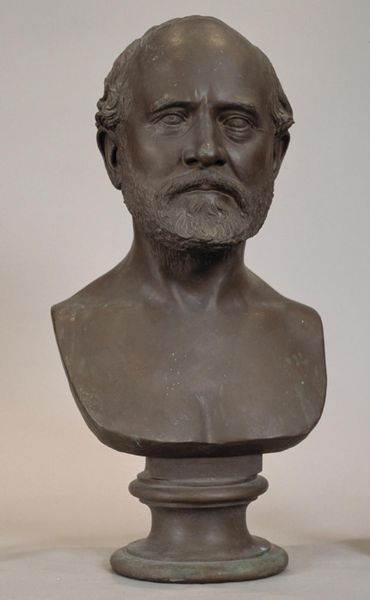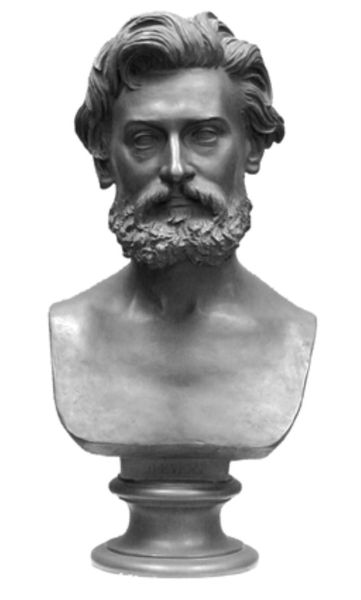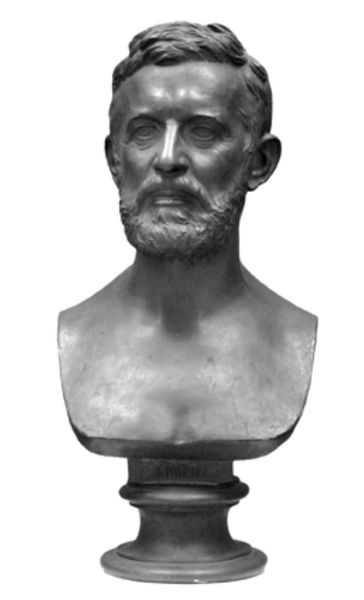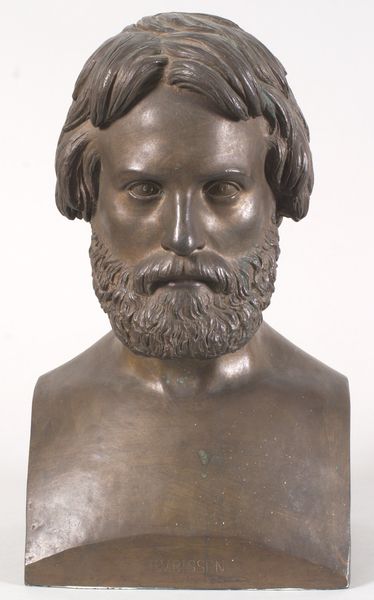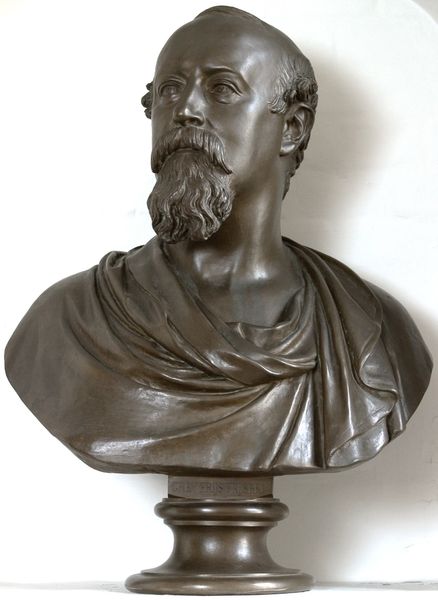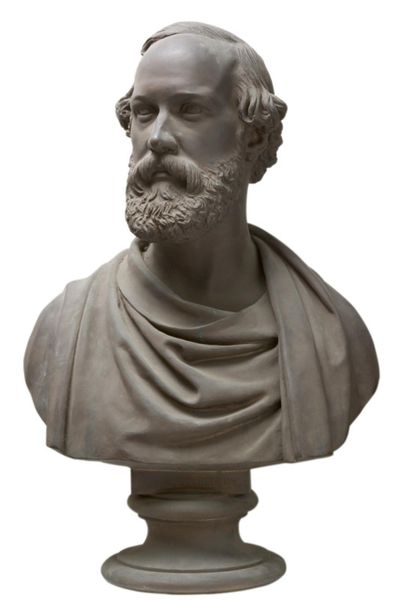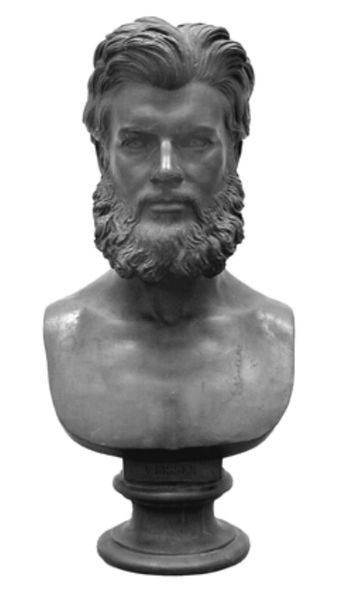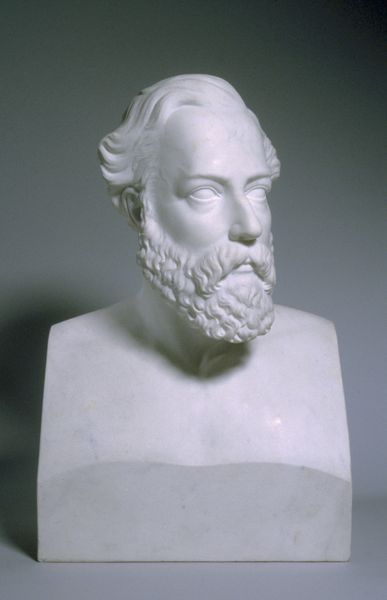
bronze, sculpture
#
portrait
#
sculpture
#
bronze
#
classicism
#
sculpture
#
realism
Dimensions: 64.5 cm (height) (Netto)
Curator: Immediately, I sense a stoic sort of presence radiating from this bronze bust. Is that verdigris, I wonder? Editor: It is indeed. This is a bronze sculpture titled "Maleren Wilhelm Marstrand" by H.W. Bissen, created in 1858. It resides in the SMK - Statens Museum for Kunst. Tell me, what visual cues contribute to your sense of that stoic presence? Curator: Well, first the figure’s direct gaze, conveying unwavering focus. And those deeply carved lines etched around the eyes and mouth – those are the indelible marks of experience etched in the flesh. This realism is meant to convey the weight of life, don't you think? Editor: Absolutely. Realism as a style was growing rapidly in Europe as society became increasingly democratized and moved past Romantic glorification of heroes. I also see a hint of classical sculpture, in the way that the bust abruptly ends at the chest and arms. Though the lines aren’t nearly as idealized as something from ancient Greece. What could those styles signify? Curator: Well, if Bissen was deliberate about it, which he surely was, one could argue it implies a conscious effort to present Marstrand as a modern intellectual with ties to this ancient classical tradition that represented wisdom. His gaze directs him toward the future, informed by historical consciousness. It echoes ideas about how individuals reflect deeper universal principles, a hallmark of portraiture since antiquity. Editor: I appreciate your insight into this continuity. I find myself wondering about the significance of commemorating Marstrand at that specific point in history, Denmark in 1858? What were the social and cultural conversations occurring at the time? How would the people receiving it respond to its statements on wisdom and vision? Curator: You bring up an important point about historical context. To understand this portrait fully, we'd need to explore the society for whom Bissen created this artwork. Editor: Indeed, how artistic vision functions within systems of power. It all raises such crucial and necessary questions! It gives me hope when thinking about how we view artworks today. Curator: It certainly emphasizes the importance of sustained questioning when engaging with visual culture.
Comments
No comments
Be the first to comment and join the conversation on the ultimate creative platform.
